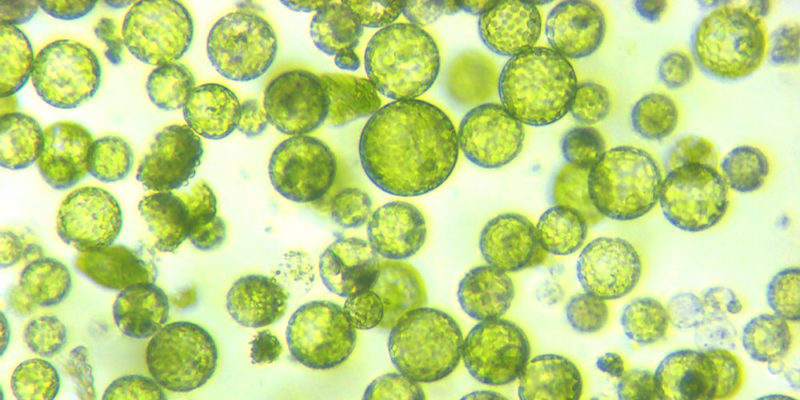We explain what the Monera Kingdom is and what its general characteristics are. Also, how they are classified and their type of reproduction.
What is the monera kingdom?

The broader categories into which living things are classified are called kingdoms . Although the names and criteria have changed since the beginning of biology , currently the most widespread classification is:
- Animal Kingdom (Animalia)
- Vegetable kingdom (Plantae)
- Kingdom of mushrooms (Fungi)
- Kingdom of the Protists (Protista)
- Monera kingdom (Monera).
Not much is known about the transit between a prokaryotic cell world and that of eukaryotes , key in the development of more complex multicellular beings.
However, all theories suggest that a pair of unicellular organisms would have developed some type of increasingly close symbiosis .
In this way, one became part of the body of the other , and was exclusively in charge of some internal functions of the cell until giving rise to a new type of individual.
In any case, it is generally accepted that the monera kingdom is evolutionarily prior to all the others that are known.
The term monera is currently in disuse , in favor of the classification of the three domains: eukarya, archaea and bacteria (point 9).
General characteristics of the Monera kingdom
 Members of the Monera kingdom can be very diverse in their form and ways of life . However, they have some minimal characteristics that point to their evolutionary and biological simplicity, such as:
Members of the Monera kingdom can be very diverse in their form and ways of life . However, they have some minimal characteristics that point to their evolutionary and biological simplicity, such as:
- Size between 3 to 5 micrometers: They are the smallest living beings that exist in nature.
- They are single-celled beings: They are prokaryotic unicellular organisms, that is, totally autonomous cells that do not form tissues, nor more complex organisms.
- They do not have organelles: Unlike eukaryotic cells, which are larger and more complex internally, monkeys do not have a cell nucleus , mitochondria, or plastids.
- Asexual reproduction: Moneras reproduce through processes that do not involve meiosis or gamete production, but usually binary fusion.
- Circular DNA: Since they lack a nucleus, their DNA is scattered throughout the cytoplasm and is shaped like a circle rather than a double helix.
- Locomotion: They generally move through flagella, but can be immobile as well.
- Nutrition: Moneras are generally heterotrophic (saprophytic, parasitic or symbiotic) but they can also be autotrophic (photosynthetic or chemosynthetic).
Origin of the term monera
 The term "monera" comes from the Greek moneres ("simple") , and has changed its specific meaning over time. It was initially proposed in 1866 by Ernst Haeckel, the first to propose a classification of life based on the then young theory of evolution.
The term "monera" comes from the Greek moneres ("simple") , and has changed its specific meaning over time. It was initially proposed in 1866 by Ernst Haeckel, the first to propose a classification of life based on the then young theory of evolution.This scientist recognized, in his classification of life, three kingdoms: animal, plant and protist, bringing together in the last all the "simple" forms, among which were the moneras or moneres , the most primitive forms of life and the base of the evolutionary tree.
Later, Edóard Pierre Chatton discovered in 1920 that bacteria did not have a cell nucleus . This made it possible to distinguish life between prokaryotes and eukaryotes.
From then on Fred Alexander Barkley in 1939 used the term "monera" to refer to the first, much more primitive. According to him, this kingdom was divided into archeopyta (cyanobacteria) and schizophyta ( bacteria ).
Later, Herbert Copeland reorganized the kingdoms of life proposing four categories : animals, plants, protists (simple eukaryotes) and moneras (prokaryotes). To this classification Robert Whittaker added the kingdom of fungi ( Fungi ) and it is this version, revised in 2000, that we use today.
Monera kingdom classification
Initially, this kingdom was subdivided into two categories: bacteria and archaea, each with its own subclassification. However, after the discovery of ribosomal DNA, a new prokaryotic classification could be established in four different segments:
- Mendosicutes , Archeas or Archaebacteria: Its name means "ancient", because at the beginning they were supposed to be a species of protobacteria. Their classification is difficult, since they are very small, but they have metabolic pathways and internal processes that are more similar to eukaryotes than to traditional prokaryotes. However, they are much more versatile in their nutrition than eukaryotes and can inhabit harsh environments.
- Mollicutes , Tenericutes or mycoplasmas: A type of bacteria, especially parasitic, lacking the cell wall of most bacteria and possessing arather simplifiedshape and genetic code .
- Gracilicutes or gram negative bacteria: It is a supergroup of bacteria that make up the groups Spirochaetes , Proteobacteria , Planctobacteria. They have a thin murein skin and a double plasma membrane, which is why they are not susceptible to Gram stain, acquiring a pink color instead of blue under this procedure.
- Firmicutes or gram positive bacteria: Also called endobacteria, they have a thick cell wall and are shaped like a bacillus or coconut. In this category are gram positive bacteria, those that respond to the Gram stain by acquiring blue or purple color. They are associated with numerous processes of fermentation of organic matter.
Reproduction of the moneras
As we said before, the reproduction of the moneras is always asexual . It can occur by binary fission (never by mitosis) or by limited conjugation or exchange of genetic material (parasexuality). This represents an evolutionary disadvantage with respect to sexual reproduction, which allows greater margins of genetic variety.
Habitat of the Monera kingdom
 Moneras are extremely hardy life forms , found in virtually every possible habitat on the planet , forming colonies of individuals that exploit the nutritional resources around them.
Moneras are extremely hardy life forms , found in virtually every possible habitat on the planet , forming colonies of individuals that exploit the nutritional resources around them.We can find them in the intestines of most animals . It may be that they are in perfect symbiosis with them or, on the contrary, parasitizing their blood and tissues in infections capable of killing them.
They are also found in fresh and salty waters , in polar ice, on the seabed where light does not reach , and even in mineral rocks under the ground.
Moneras and protists
As we saw earlier, the moneras and the protists are different kingdoms. However, they share their biological simplicity and both are, for the most part, single-celled organisms.But a gigantic evolutionary difference separates them: the presence of a cell nucleus, that is, protists are eukaryotes while moneras are prokaryotes .
Importance of moneras
 Given that even today we can find moneras in habitats hostile to other life forms, it is believed that their simplicity and primitive character allowed them to emerge in the hostile conditions that existed on our planet in its early stages.
Given that even today we can find moneras in habitats hostile to other life forms, it is believed that their simplicity and primitive character allowed them to emerge in the hostile conditions that existed on our planet in its early stages.In other words, the Monera kingdom was the first to exist . Its understanding is, therefore, the understanding of the very origin of life on our planet.
Virus
Viruses are a very particular case of biology, because despite being extremely simple biological forms, they are not found among the moneras , and must be classified in a totally independent way.Strictly speaking, viruses are much more basic than bacteria , but they cannot survive without them. They depend on them (and other types of cells) to reproduce: they are injected with their parasitic genetic material and thus the bacteria are forced to synthesize the proteins of the virus.
From one point of view, it is unknown whether viruses are really life forms , or something else entirely.
Moneras in the three domains
 The scientist Carl Richard Woese proposed, at the end of the 20th century , a classification of organisms not in kingdoms but in three great domains, orders or super-kingdoms:
The scientist Carl Richard Woese proposed, at the end of the 20th century , a classification of organisms not in kingdoms but in three great domains, orders or super-kingdoms:
- Eukarya: Where are all living beings whose cells have well-defined nuclei: plants, animals, fungi and protists.
- Archea: Extremely simple and abundant prokaryotes on the planet, but difficult to grow in the laboratory. They are organisms accustomed to extreme habitats in which they take advantage of the chemical energy of volcanoes or hot springs, for example, and that would be part of the "original kingdoms" along with bacteria.
- Bacterium: Initially called eubacteria, they are evolutionarily different from archaea, based on analysis of their ribosomal RNA. They have a cell wall and are the oldest of the three domains, one of the most varied and one of the simplest.
Examples of moneras
 Examples of members of the monera kingdom are the various bacteria known to mankind, such as:
Examples of members of the monera kingdom are the various bacteria known to mankind, such as:
- Escherichia coli: A gram-negative bacillus that often parasitizes the human digestive tract.
- Clostridium tetani: A very common bacterium in the soil and in the digestive tract of animals, which can causetetanus, a lethal disease,in humans when it enters the bloodstream .
- Plantoea stewartii: Bacterium that affects plants, especially different types of corn , commonly fought in North American crops.
Luke is passionate about fostering student involvement and connection. He studied psychology for his major and likes learning about the past. Luke aims to specialize in artificial intelligence and cybersecurity. .
Leave a reply
Your email address will not be published. Required fields are marked *Recent post

Sport: What Is It, Types, Risks, Features, Characteristics and Examples
September 23, 2021

Dogs: Emergence, Features, Characteristics, Feeding and Breeds
September 24, 2021

Story: Definition, Elements, Structure, Features and Characteristics
September 24, 2021

Essay: Definition, Structure, Features, Characteristics, How to Do It
September 24, 2021
